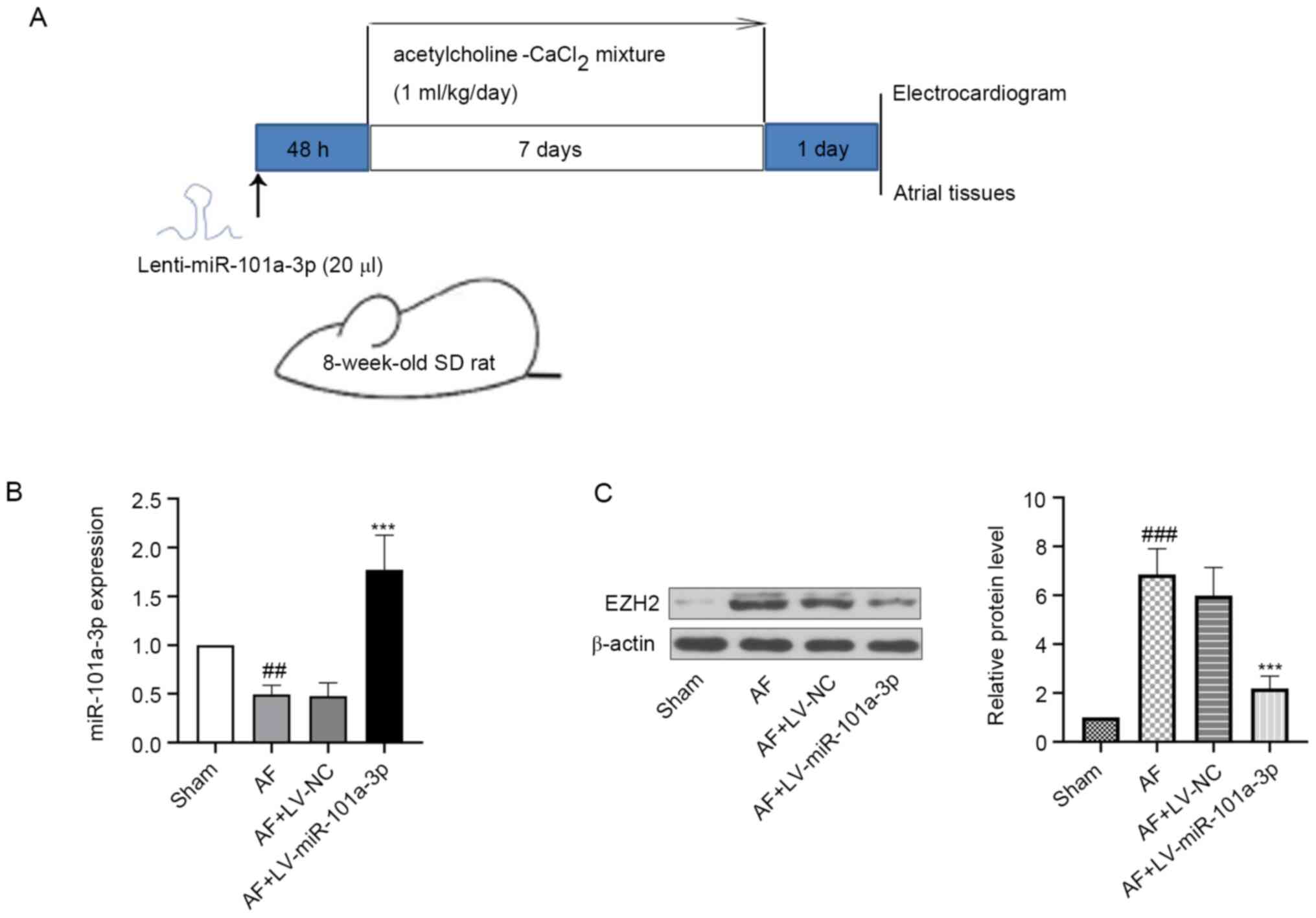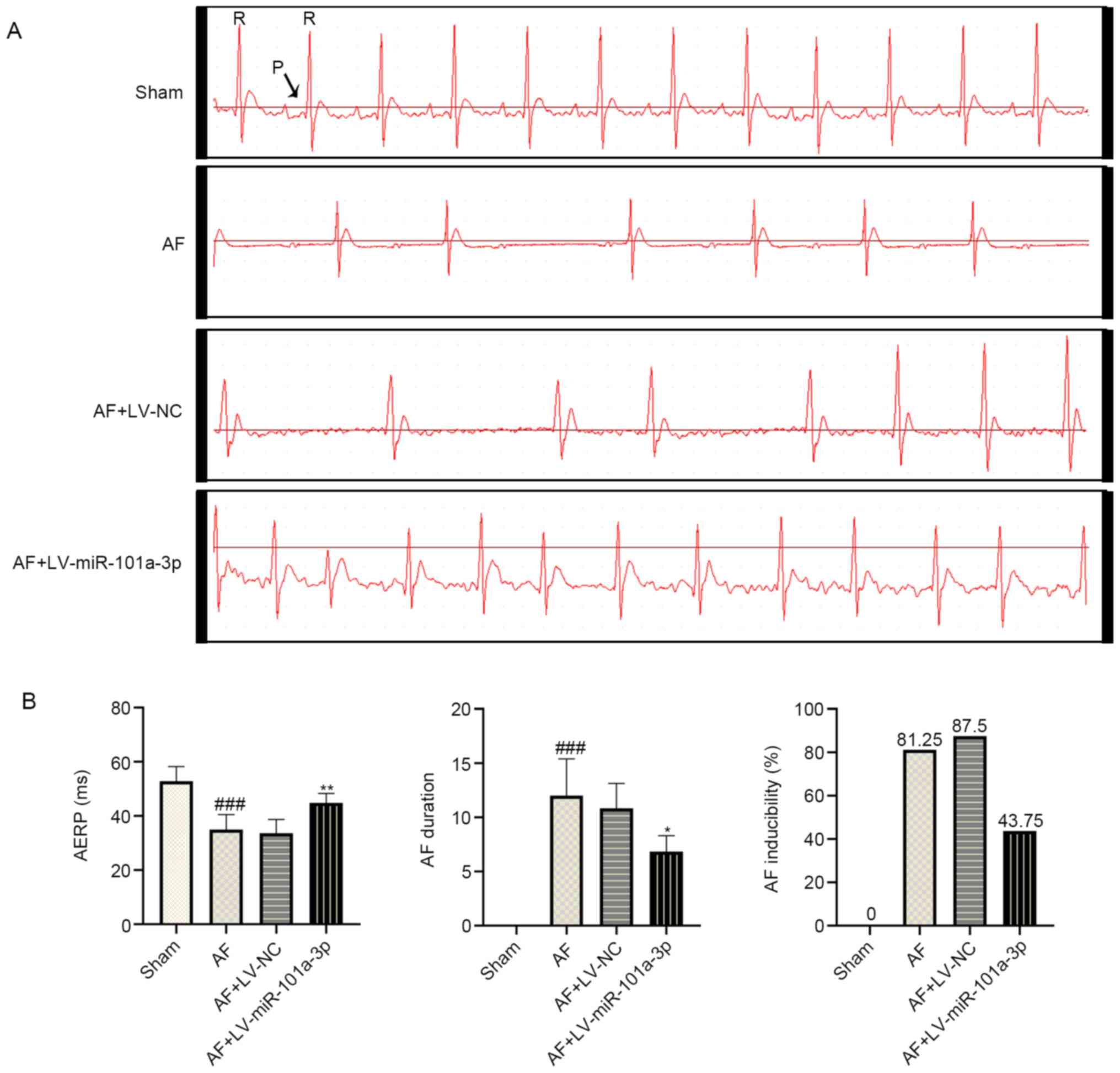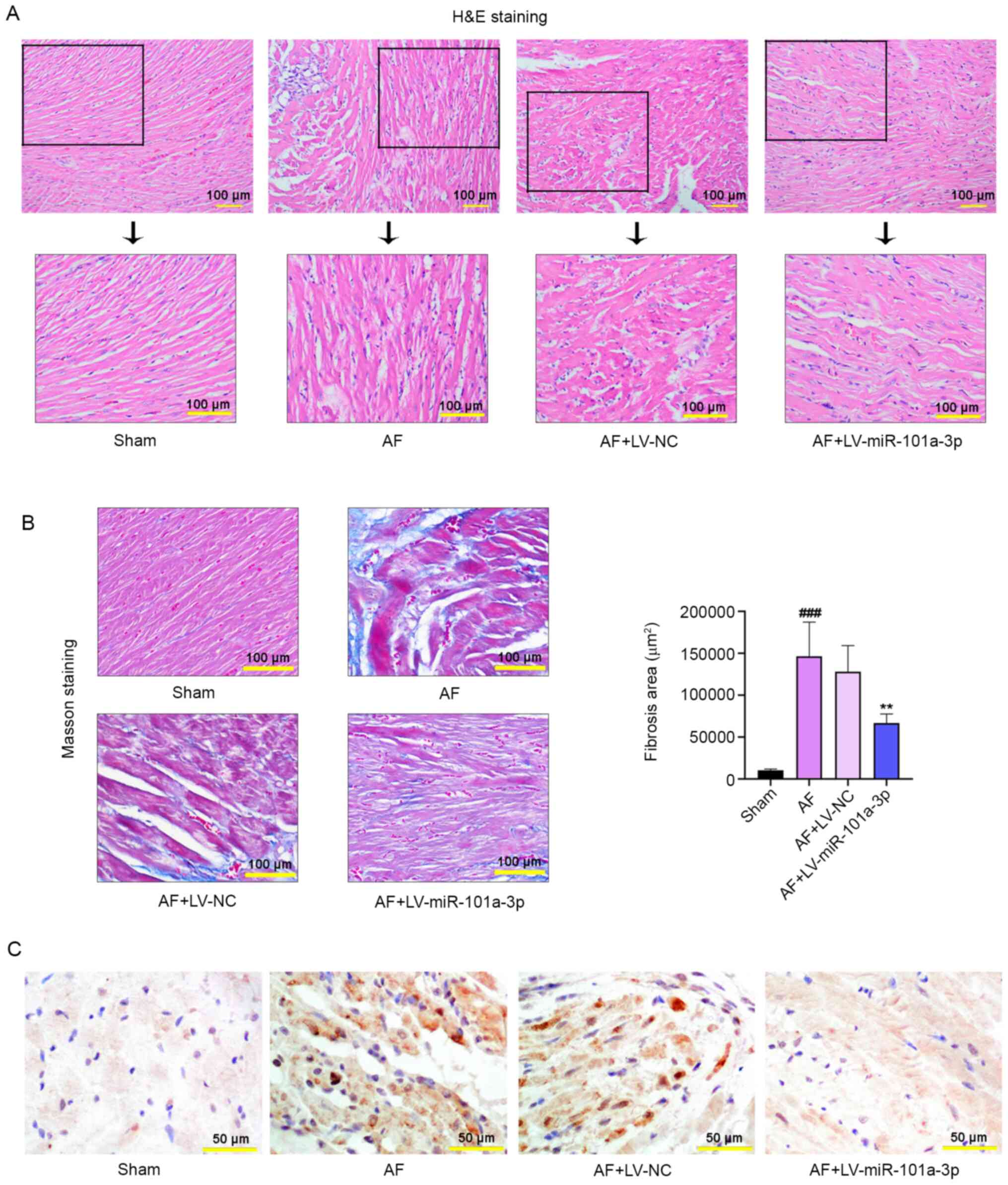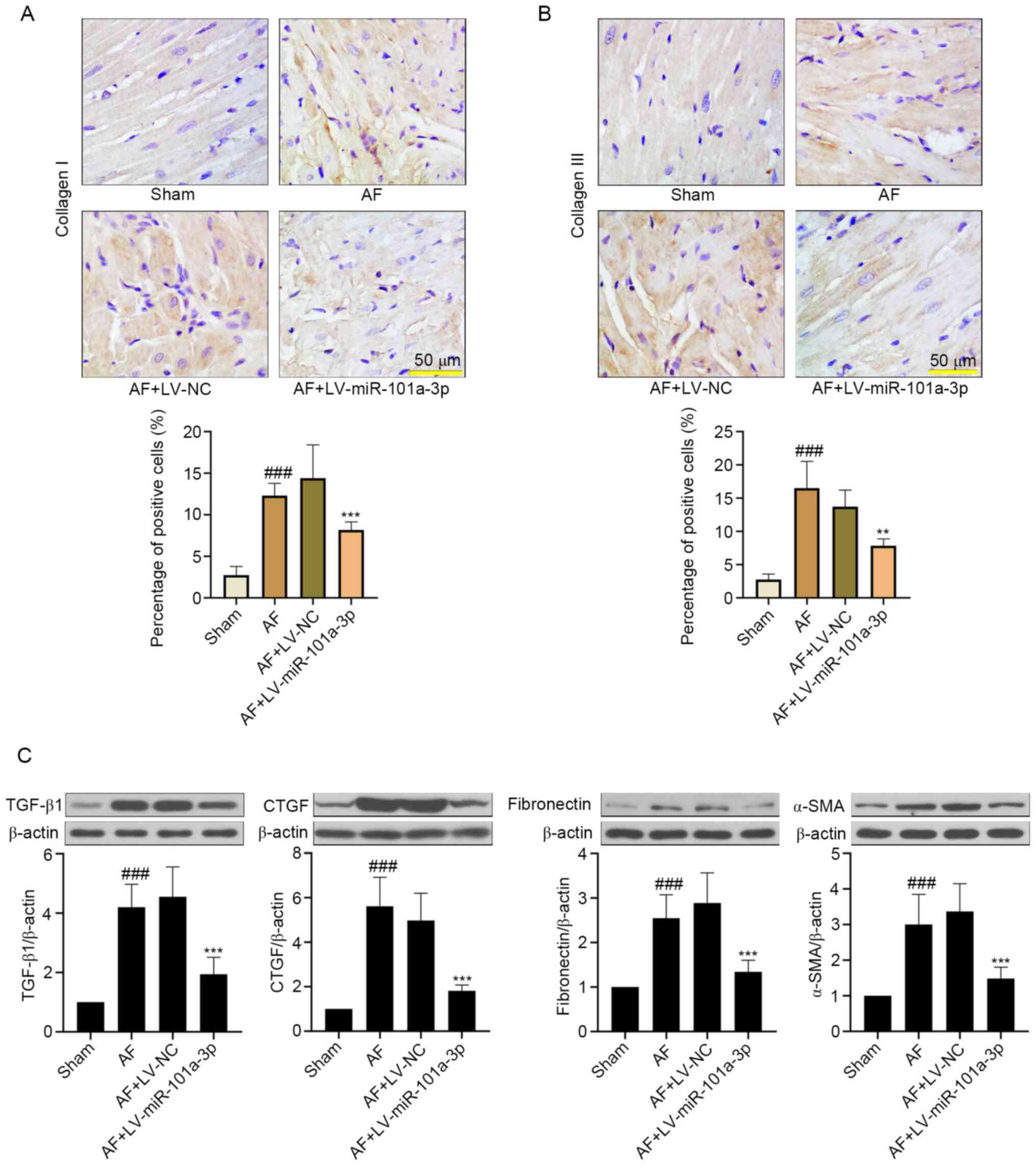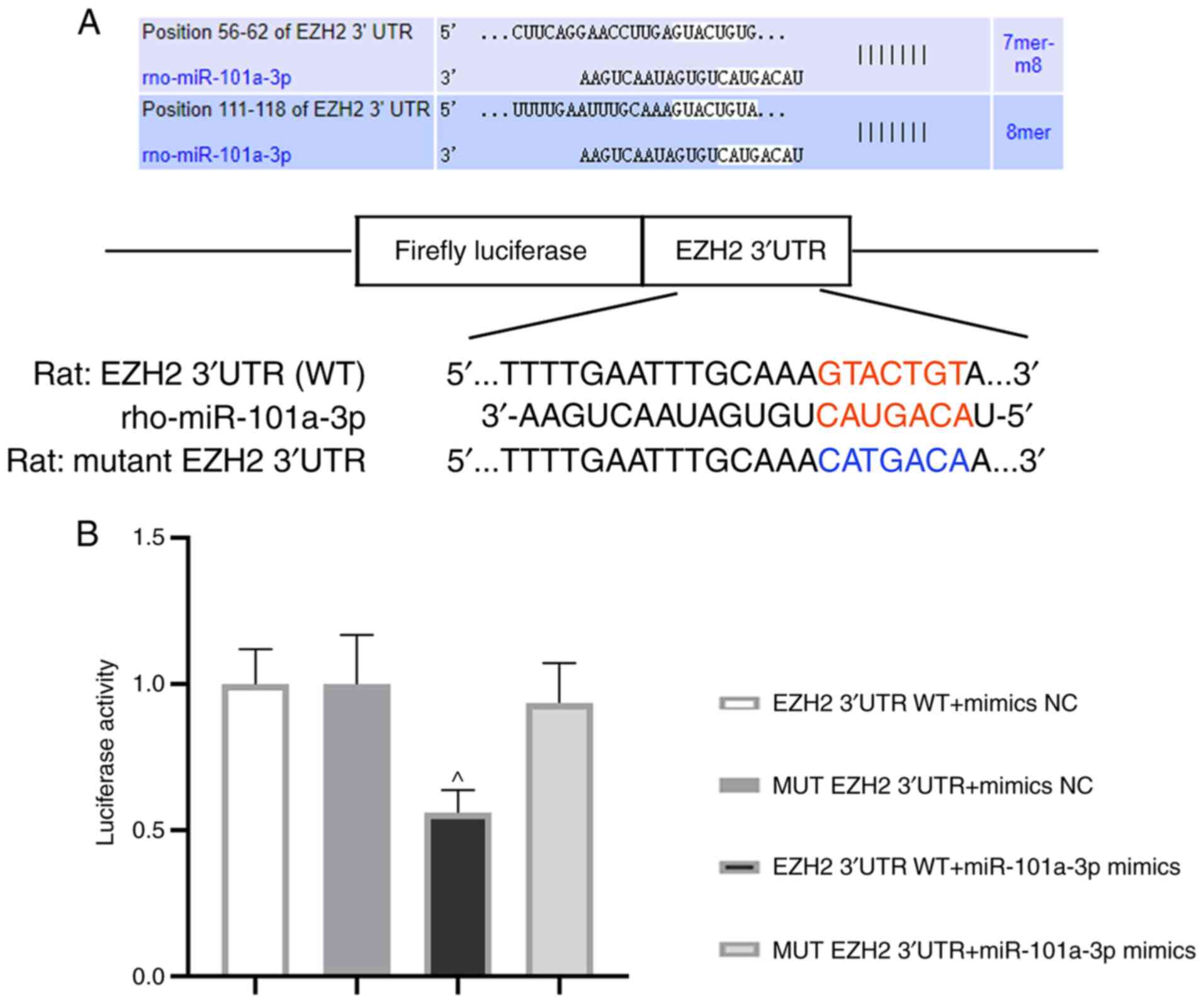|
1
|
Yan Y, Shi R, Yu X, Sun C, Zang W and Tian
H: Identification of atrial fibrillation-associated microRNAs in
left and right atria of rheumatic mitral valve disease patients.
Genes Genet Syst. 94:23–34. 2019. View Article : Google Scholar : PubMed/NCBI
|
|
2
|
Ferrari R, Bertini M, Blomstrom-Lundqvist
C, Dobrev D, Kirchhof P, Pappone C, Ravens U, Tamargo J, Tavazzi L
and Vicedomini GG: An update on atrial fibrillation in 2014: From
pathophysiology to treatment. Int J Cardiol. 203:22–29. 2016.
View Article : Google Scholar : PubMed/NCBI
|
|
3
|
Carapetis JR, Steer AC, Mulholland EK and
Weber M: The global burden of group A streptococcal diseases.
Lancet Infect Dis. 5:685–694. 2005. View Article : Google Scholar : PubMed/NCBI
|
|
4
|
Yao L, Zhou B, You L, Hu H and Xie R:
LncRNA MIAT/miR-133a-3p axis regulates atrial fibrillation and
atrial fibrillation-induced myocardial fibrosis. Mol Biol Rep.
47:2605–2617. 2020. View Article : Google Scholar : PubMed/NCBI
|
|
5
|
Lu Y, Zhang Y, Wang N, Pan Z, Gao X, Zhang
F, Zhang Y, Shan H, Luo X, Bai Y, et al: MicroRNA-328 contributes
to adverse electrical remodeling in atrial fibrillation.
Circulation. 122:2378–2387. 2010. View Article : Google Scholar : PubMed/NCBI
|
|
6
|
Santulli G, Iaccarino G, De Luca N,
Trimarco B and Condorelli G: Atrial fibrillation and microRNAs.
Front Physiol. 5:152014. View Article : Google Scholar : PubMed/NCBI
|
|
7
|
Li X, Wang B, Cui H, Du Y, Song Y, Yang L,
Zhang Q, Sun F, Luo D, Xu C, et al: Let-7e replacement yields
potent anti-arrhythmic efficacy via targeting beta 1-adrenergic
receptor in rat heart. J Cell Mol Med. 18:1334–1343. 2014.
View Article : Google Scholar : PubMed/NCBI
|
|
8
|
Galenko O, Jacobs V, Knight S, Taylor M,
Cutler MJ, Muhlestein JB, Carlquist JL, Knowlton KU and Jared Bunch
T: The role of microRNAs in the development, regulation, and
treatment of atrial fibrillation. J Interv Card Electrophysiol.
55:297–305. 2019. View Article : Google Scholar : PubMed/NCBI
|
|
9
|
Briasoulis A, Sharma S, Telila T,
Mallikethi-Reddy S, Papageorgiou N, Oikonomou E and Tousoulis D:
MicroRNAs in atrial fibrillation. Curr Med Chem. 26:855–863. 2019.
View Article : Google Scholar : PubMed/NCBI
|
|
10
|
Lv X, Li J, Hu Y, Wang S, Yang C, Li C and
Zhong G: Overexpression of miR-27b-3p targeting Wnt3a regulates the
signaling pathway of Wnt/β-catenin and attenuates atrial fibrosis
in rats with atrial fibrillation. Oxid Med Cell Longev.
2019:57037642019. View Article : Google Scholar : PubMed/NCBI
|
|
11
|
Li Q, Gao Y, Zhu J and Jia Q: MiR-101
attenuates myocardial infarction-induced injury by targeting DDIT4
to regulate autophagy. Curr Neurovasc Res. 17:123–130. 2020.
View Article : Google Scholar : PubMed/NCBI
|
|
12
|
Xiao L, Gu Y, Sun Y, Chen J, Wang X, Zhang
Y, Gao L and Li L: The long noncoding RNA XIST regulates cardiac
hypertrophy by targeting miR-101. J Cell Physiol. 234:13680–13692.
2019. View Article : Google Scholar : PubMed/NCBI
|
|
13
|
Dong H, Sun Y, Shan F, Sun Q and Yang B:
Down-regulation of miR-101 contributes to rheumatic heart disease
through up-regulating TLR2. Med Sci Monit. 21:1500–1506. 2015.
View Article : Google Scholar : PubMed/NCBI
|
|
14
|
Pan Z, Sun X, Shan H, Wang N, Wang J, Ren
J, Feng S, Xie L, Lu C, Yuan Y, et al: MicroRNA-101 inhibited
postinfarct cardiac fibrosis and improved left ventricular
compliance via the FBJ osteosarcoma oncogene/transforming growth
factor-β1 pathway. Circulation. 126:840–850. 2012. View Article : Google Scholar : PubMed/NCBI
|
|
15
|
Zhou Y, Shiok TC, Richards AM and Wang P:
MicroRNA-101a suppresses fibrotic programming in isolated cardiac
fibroblasts and in vivo fibrosis following trans-aortic
constriction. J Mol Cell Cardiol. 121:266–276. 2018. View Article : Google Scholar : PubMed/NCBI
|
|
16
|
Ai S, Yu X, Li Y, Peng Y, Li C, Yue Y, Tao
G, Li C, Pu WT and He A: Divergent requirements for EZH1 in heart
development versus regeneration. Circ Res. 121:106–112. 2017.
View Article : Google Scholar : PubMed/NCBI
|
|
17
|
Song S, Zhang R, Mo B, Chen L, Liu L, Yu
Y, Cao W, Fang G, Wan Y, Gu Y, et al: EZH2 as a novel therapeutic
target for atrial fibrosis and atrial fibrillation. J Mol Cell
Cardiol. 135:119–133. 2019. View Article : Google Scholar : PubMed/NCBI
|
|
18
|
Zou D, Geng N, Chen Y, Ren L, Liu X, Wan
J, Guo S and Wang S: Ranolazine improves oxidative stress and
mitochondrial function in the atrium of
acetylcholine-CaCl2 induced atrial fibrillation rats.
Life Sci. 156:7–14. 2016. View Article : Google Scholar : PubMed/NCBI
|
|
19
|
Yang Q, Lv Q, Feng M, Liu M, Feng Y, Lin
S, Yang J and Hu J: Taurine prevents the electrical remodeling in
Ach-CaCl(2) induced atrial fibrillation in rats. Adv Exp Med Biol.
975:821–830. 2017. View Article : Google Scholar : PubMed/NCBI
|
|
20
|
Zhou Q, Chen B, Chen X, Wang Y, Ji J,
Kizaibek M, Wang X, Wu L, Hu Z, Gao X, et al: Arnebiae Radix
prevents atrial fibrillation in rats by ameliorating atrial
remodeling and cardiac function. J Ethnopharmacol. 248:1123172020.
View Article : Google Scholar : PubMed/NCBI
|
|
21
|
Li Y, Song B and Xu C: Effects of Guanfu
total base on Bcl-2 and Bax expression and correlation with atrial
fibrillation. Hellenic J Cardiol. 59:274–278. 2018. View Article : Google Scholar : PubMed/NCBI
|
|
22
|
Wang Z, Ouyang Q, Huang Z, Lin L, Yu E and
Ferrari MW: Prenatal nicotine exposure induces gender-associated
left ventricular-arterial uncoupling in adult offspring. Mol Med
Rep. 12:410–418. 2015. View Article : Google Scholar : PubMed/NCBI
|
|
23
|
Chen B, Xu M and Li B: The clinical
experience for treating post-burn depigmentation with tiny
epidermal particles graft. Int Wound J. 14:165–171. 2017.
View Article : Google Scholar : PubMed/NCBI
|
|
24
|
Wang C, Yuan W, Hu A, Lin J, Xia Z, Yang
CF, Li Y and Zhang Z: Dexmedetomidine alleviated sepsis-induced
myocardial ferroptosis and septic heart injury. Mol Med Rep.
22:175–184. 2020. View Article : Google Scholar : PubMed/NCBI
|
|
25
|
Livak KJ and Schmittgen TD: Analysis of
relative gene expression data using real-time quantitative PCR and
the 2(-Delta Delta C(T)) method. Methods. 25:402–408. 2001.
View Article : Google Scholar : PubMed/NCBI
|
|
26
|
Gaspo R: The tachycardia-induced dog model
of atrial fibrillation. clinical relevance and comparison with
other models. J Pharmacol Toxicol Methods. 42:11–20. 1999.
View Article : Google Scholar : PubMed/NCBI
|
|
27
|
Zhang YL, Cao HJ, Han X, Teng F, Chen C,
Yang J, Yan X, Li PB, Liu Y, Xia YL, et al: Chemokine receptor
CXCR-2 initiates atrial fibrillation by triggering monocyte
mobilization in mice. Hypertension. 76:381–392. 2020. View Article : Google Scholar : PubMed/NCBI
|
|
28
|
Dong Q, Li S, Wang W, Han L, Xia Z, Wu Y,
Tang Y, Li J and Cheng X: FGF23 regulates atrial fibrosis in atrial
fibrillation by mediating the STAT3 and SMAD3 pathways. J Cell
Physiol. 234:19502–19510. 2019. View Article : Google Scholar : PubMed/NCBI
|
|
29
|
Wang Y, Xu P, Zhang C, Feng J, Gong W, Ge
S and Guo Z: LncRNA NRON alleviates atrial fibrosis via promoting
NFATc3 phosphorylation. Mol Cell Biochem. 457:169–177. 2019.
View Article : Google Scholar : PubMed/NCBI
|
|
30
|
Qiao G, Xia D, Cheng Z and Zhang G:
miR-132 in atrial fibrillation directly targets connective tissue
growth factor. Mol Med Rep. 16:4143–4150. 2017. View Article : Google Scholar : PubMed/NCBI
|
|
31
|
Chen X, Zhang W, Wang Q, Du L, Yi Y, Liu
Y, Liu X and Duan S: Eplerenone inhibits atrial fibrosis in mutant
TGF-β1 transgenic mice. Sci China Life Sci. 59:1042–1047. 2016.
View Article : Google Scholar : PubMed/NCBI
|
|
32
|
Burstein B, Qi XY, Yeh YH, Calderone A and
Nattel S: Atrial cardiomyocyte tachycardia alters cardiac
fibroblast function: A novel consideration in atrial remodeling.
Cardiovasc Res. 76:442–452. 2007. View Article : Google Scholar : PubMed/NCBI
|
|
33
|
Xiao G, Jin LL, Liu CQ, Wang YC, Meng YM,
Zhou ZG, Chen J, Yu XJ, Zhang YJ, Xu J and Zheng L: EZH2 negatively
regulates PD-L1 expression in hepatocellular carcinoma. J
Immunother Cancer. 7:3002019. View Article : Google Scholar : PubMed/NCBI
|
|
34
|
Zhou L, Mudianto T, Ma X, Riley R and
Uppaluri R: Targeting EZH2 enhances antigen presentation, antitumor
immunity, and circumvents Anti-PD-1 resistance in head and neck
cancer. Clin Cancer Res. 26:290–300. 2020. View Article : Google Scholar : PubMed/NCBI
|
|
35
|
Yomtoubian S, Lee SB, Verma A, Izzo F,
Markowitz G, Choi H, Cerchietti L, Vahdat L, Brown KA, Andreopoulou
E, et al: Inhibition of EZH2 catalytic activity selectively targets
a metastatic subpopulation in triple-negative breast cancer. Cell
Rep. 30:755–770.e6. 2020. View Article : Google Scholar : PubMed/NCBI
|
|
36
|
Xiao X, Senavirathna LK, Gou X, Huang C,
Liang Y and Liu L: EZH2 enhances the differentiation of fibroblasts
into myofibroblasts in idiopathic pulmonary fibrosis. Physiol Rep.
4:e129152016. View Article : Google Scholar : PubMed/NCBI
|
|
37
|
Zhang Q, Dong P, Liu X, Sakuragi N and Guo
SW: Enhancer of Zeste homolog 2 (EZH2) induces
epithelial-mesenchymal transition in endometriosis. Sci Rep.
7:68042017. View Article : Google Scholar : PubMed/NCBI
|
|
38
|
Zhu WS, Tang CM, Xiao Z, Zhu JN, Lin QX,
Fu YH, Hu ZQ, Zhang Z, Yang M, Zheng XL, et al: Targeting EZH1 and
EZH2 contributes to the suppression of fibrosis-associated genes by
miR-214-3p in cardiac myofibroblasts. Oncotarget. 7:78331–78342.
2016. View Article : Google Scholar : PubMed/NCBI
|
|
39
|
Zhou X, Xiong C, Tolbert E, Zhao TC,
Bayliss G and Zhuang S: Targeting histone methyltransferase
enhancer of zeste homolog-2 inhibits renal epithelial-mesenchymal
transition and attenuates renal fibrosis. FASEB J.
32:fj201800237R2018. View Article : Google Scholar : PubMed/NCBI
|
|
40
|
Cai X, Li Z, Zhang Q, Qu Y, Xu M, Wan X
and Lu L: CXCL6-EGFR-induced Kupffer cells secrete TGF-β1 promoting
hepatic stellate cell activation via the SMAD2/BRD4/C-MYC/EZH2
pathway in liver fibrosis. J Cell Mol Med. 22:5050–5061. 2018.
View Article : Google Scholar : PubMed/NCBI
|
|
41
|
Shi Y, Tao M, Wang Y, Zang X, Ma X, Qiu A,
Zhuang S and Liu N: Genetic or pharmacologic blockade of enhancer
of zeste homolog 2 inhibits the progression of peritoneal fibrosis.
J Pathol. 250:79–94. 2020. View Article : Google Scholar : PubMed/NCBI
|
|
42
|
Gonzalez DM and Medici D: Signaling
mechanisms of the epithelial-mesenchymal transition. Sci Signal.
7:re82014. View Article : Google Scholar : PubMed/NCBI
|
|
43
|
Duan J, Gherghe C, Liu D, Hamlett E,
Srikantha L, Rodgers L, Regan JN, Rojas M, Willis M, Leask A, et
al: Wnt1/β catenin injury response activates the epicardium and
cardiac fibroblasts to promote cardiac repair. EMBO J. 31:429–442.
2012. View Article : Google Scholar : PubMed/NCBI
|
|
44
|
Boudreau RL, Spengler RM and Davidson BL:
Rational design of therapeutic siRNAs: minimizing off-targeting
potential to improve the safety of RNAi therapy for Huntington's
disease. Mol Ther. 19:2169–2177. 2011. View Article : Google Scholar : PubMed/NCBI
|
|
45
|
Scaggiante B, Dapas B, Farra R, Grassi M,
Pozzato G, Giansante C, Fiotti N and Grassi G: Improving siRNA
bio-distribution and minimizing side effects. Curr Drug Metab.
12:11–23. 2011. View Article : Google Scholar : PubMed/NCBI
|















